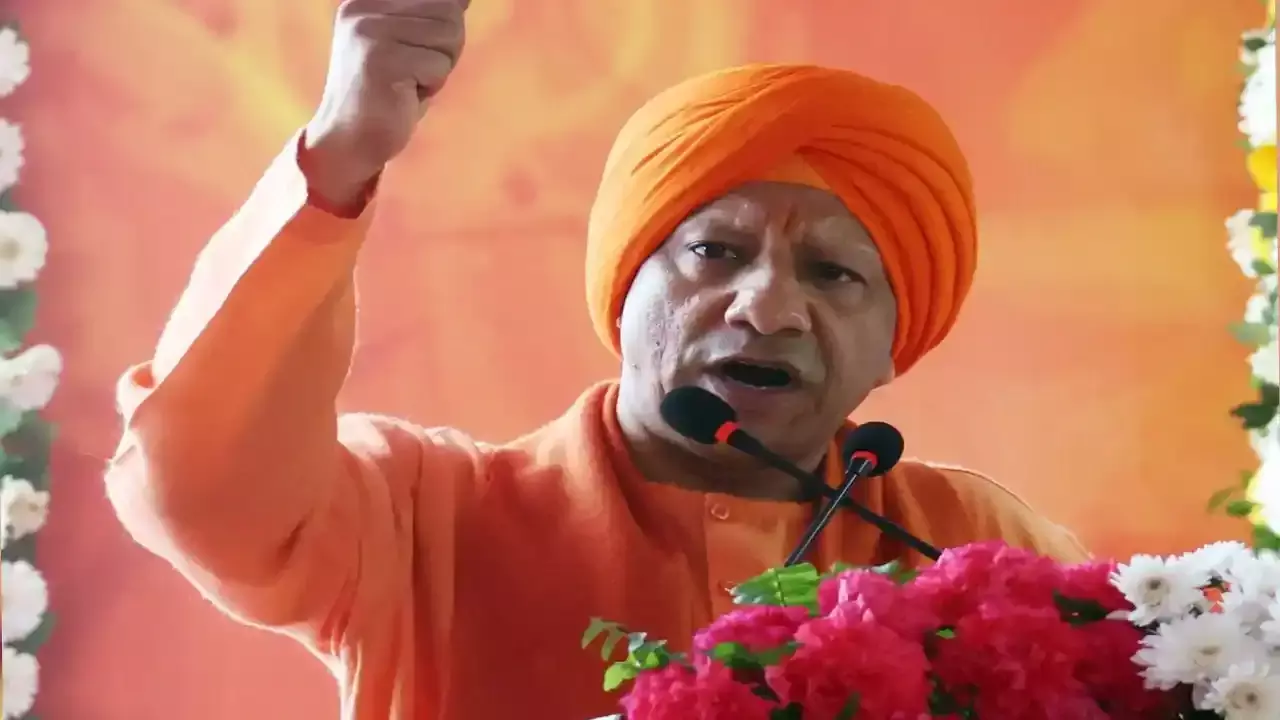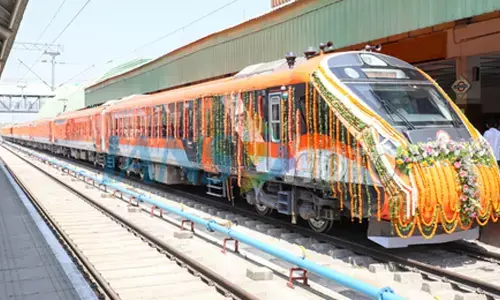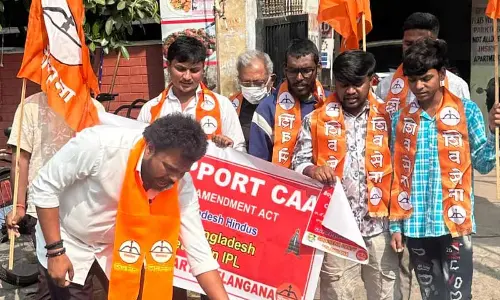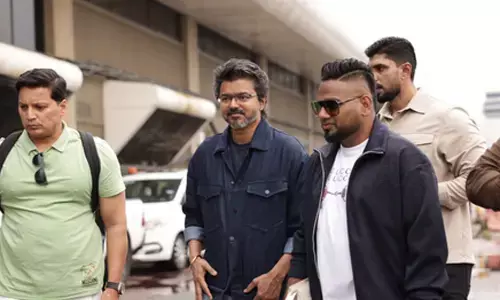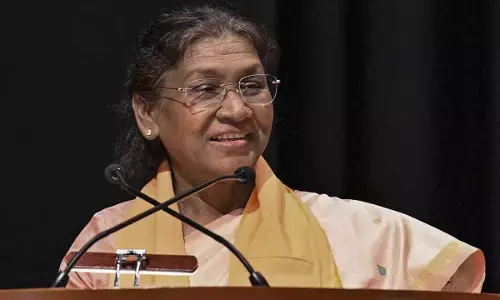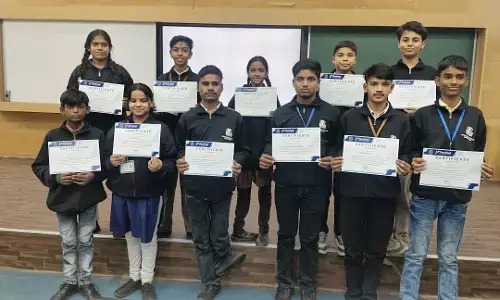Redesigning PDS

Redesigning PDS. The truth was that creating rural manual employment was enormously more expensive than food subsidy and therefore the sensible approach was integrating an affordable PDS with a rural employment programme underpinned by this reorganized PDS as the delivery system for both, had repeatedly been argued by me in the PMO meetings
The truth was that creating rural manual employment was enormously more expensive than food subsidy and therefore the sensible approach was integrating an affordable PDS with a rural employment programme underpinned by this reorganized PDS as the delivery system for both, had repeatedly been argued by me in the PMO meetings
In Prime Minister Rajiv Gandhi’s time, the efforts at redesigning the public distribution system (PDS) in a manner that it could affordably reach every poor household in every nook d corner of India addressing rural poverty as hunger as its first threshold to cross, and the PDS acting as the infrastructure for delivering the real wage component in the form of food grains as part of the wages in the rural employment and self-employment programmes and for the ICDS programme continued. These culminated in a comprehensive note reaching the Cabinet Committee on Political Affairs in January 1988. The final step preceding this was my sending a note in late August 1987 to the Prime Minister’s Office (PMO). An important element in this note was a reference to the poverty situation in the states of Bihar, Madhya Pradesh, Uttar Pradesh and Orissa which then contributed 127 million of the 271 million people who lived below the poverty line in India or 47 % of all the Indian poor. In this note I proposed as one of the alternatives how in case my proposal for a complete overhaul of the PDS nationally was not acceptable at least the PDS in these four States plus Orissa should be overhauled. The point that while creating purchasing power through employment sounded economically clever unlike an easily criticized subsidized PDS, the truth was that creating rural manual employment was enormously more expensive than food subsidy and therefore the sensible approach was integrating an affordable PDS with a rural employment programme underpinned by this reorganized PDS as the delivery system for both, had repeatedly been argued by me in the PMO meetings. It was never either or as made out by “experts” but an integration of both that was thebedrock of my advocacy resulting from my research. I must digress for a moment here to point out that this concept of integrationhas not been grasped even today as can be seen from the way the mighty NAC produced two separate laws, one for rural employment (minus rural self-employment!), and a discrete food law. Put differently, the MGNREGA does not have a food and nutrition wage component that would have made Ambedkar’s living wage concept in Article 43 of the Constitution a reality read with the interpretation of the Supreme Court of that article on what constitutes a living wage. But then this is what happens when civil society leaders and “experts” turned political practitioners without domain expertise populate such bodies.

To return to 1987, within days of my note reaching the PMO, the Committee of Secretaries (COS) met under the chairmanship of the Cabinet Secretary B.G. Deshmukh on the 15th September 1987 and considered the proposal from the Department of Civil Supplies on the “Restructuring of the Public Distribution System”. This meeting was attended by the Secretaries, Food, Agriculture, Rural Development, Social Welfare and Civil Supplies; Montek Ahluwahlia from the PMO; Bimal Jalan, Secretary Banking and Chief Economic Adviser; Nitin Desai, Special Secretary, Planning Commission; and the Chairman, FCI. I was of course an invitee. The discussion was intensive with considerable display of absence of knowledge of field level conditions. Resource constraints, administrative difficulties in identification and enumeration (though the Planning Commission’s main job was determining the poverty line and declaring who were poor and the Rural Development Ministry’s bread and butter was the identification- based Integrated Rural Development Programme (IRDP) for the poor for which more and more money was being sought) , how a superior method would be to have an employment programme to create purchasing power (though nobody said it should be actually done), and potential leakages (as though every other Government programme was air and water tight). The COS decided to refer the proposal to the Cabinet Committee on Economic Affairs (CCEA) recommending two alternatives : one, “the existing PDS which generally caters to the non-poor should be restructured……(so) there is no subsidy to the non-poor in urban areas or to roller flour mills”;and the other, as an alternative: ” the existing PDS system (sic), with large subsidy for the non-poor, may continue and in addition the proposal as formulated by (the) Department of Civil Supplies to cover the target group of families having an annual income of not more than Rs. 4, 800 for providing the facility of specially subsidized food grains, may also be accepted.”
Then came the punch. The COS concluded: “In that case may go up further by Rs. 1, 000 crores, which would have to be met by higher taxation, lower Plan, or higher deficit. These will have their own adverse economic consequences”. The Department of Civil Supplies was directed to “accordingly bring up the proposal for consideration of the CCEA”.
Any comments on this formulation would be superfluous. India’s bureaucracy, when it came to the poor and their human resource development and right to eat, never had money. The discourse always started with “resources” and ended with “resources” and how subsides for the poor are bad. You have to prove through a cost- benefit analysis that the poor had a right to live at all. Always, it was felt that no benefit accrued to society by any costs we incurred on them. However, Civil Supplies Secretary Pandeya soldiered on and the Cabinet note that was circulated included not only the alternatives arrived at in the COS but the implications of them and recommended “the alternative of supplying specially subsidized food grains to the very poor (families with income up to Rs. 4, 800 per annum),- population of about 125 million, at an annual additional burden of about Rs.883 crores to be borne by the central government”.This cabinet note had for its basis not only my ideas on restructuring the entire PDS but also had a 15 page annex under my name advocating the refashioning of the PDS at least in the five poorest northern states of Uttar Pradesh, Madhya Pradesh, Bihar, Orissa and Rajasthan. A cabinet note, readers may know, is accompanied by the comments and views of all the departments involved with the proposal, including Finance and the omnipresent Planning Commission. Essentially, the last mentioned two killed this proposal. I never got to know which side the political leadership eventually took,with political developments having takentheir own toll.Two things, however, were certain. Ministries like Rural Development and Welfare were trying to protect their own turf in terms of their own budgets fearing a restructured PDS might see a cut by the Finance Ministry of some of their programmes. There was also the very important political consideration and fear that the opposition parties would derive political mileage form such a pro-poor programme rather than the Congress as the implementation of the programme would be by the states while the funding was by the Centre, ruled by the Congress. The latter has always been a huge federal issue and in the many meetings I attended in the PMO this refrain kept recurring with the PM’s officers asking me how PDS restructuring could be done without involving the States! That can never be done. There is only one credible solution to this, which is that all political parties in India have to arrive at a consensual recognitionthat Food, Employment, Shelter, Education, Health and Information and their subsets constitute the most essential and fundamental rights of the people and that they would not play with the lives of the poor in regard to these as they have done for decades by one-upmanship, but guarantee them to the poor as a national obligation. That alone would constitute the federal spirit written into the preamble of our Constitution. The responsibility for this lies with whoever is the Prime Minister of the day.
As the country moved towards the elections in 1989, the years 1988 and 1989 saw the ICDS programme make new strides. We designed a multi-state ICDS project covering the most backward areas of the states of Andhra Pradesh, Orissa, Bihar and Madhya Pradesh covering 600 contiguous tribal blocks with World Bank loan. We brought new concepts to enrich the ICDS but these negotiations brought me into conflict with some of the ideas of the World Bank. Some had not been resolved by the time my tenure ended in the Department. Unconnected with this, I worked on the inclusion of the adolescent girl component in the ICDS programme and wrote and published at the invitation of the greatest of India’s nutrition scientists, Dr. C. Gopalan, the outlines of this in the October 1989 Bulletin of the Nutrition Foundation of India. A policy for promotion of anganwadi workers as supervisors was also developed and declared during this period.
The General Elections of late 1989 saw the formation of a new government led by Prime Minister V.P. Singh in November 1989.
As I awaited my next posting, having relinquished charge as Joint Secretary at the Ministry of Human Resource development on the 31st December 1989, I received orders appointing me as Additional Secretary in the Prime Minister’s Office in January, 1990.








